Analysis of the ShadowHammer backdoor
On March 25, Kim Zetter published an astonishing story describing a supply-chain attack against ASUS which was run between June and November 2018. The ASUS Live Update software was backdoored in order to attack a very specific group of targets. The campaign, named ShadowHammer, was discovered and investigated by Kaspersky Lab, which will present the full details during SAS2019.
NOTE: as of yet Kaspersky has only published a single sample of the backdoor (hash: aa15eb28292321b586c27d8401703494), so the analysis and the considerations presented in this post are specific to that. Once more samples come out it may become necessary to perform some adjustments.
The backdoored setup.exe
The ASUS software is distributed as a zip archive containing 3 files, setup.exe and two versions of 409.msi. The backdoor resides in the first one. The malicious code is executed just before the program exits.
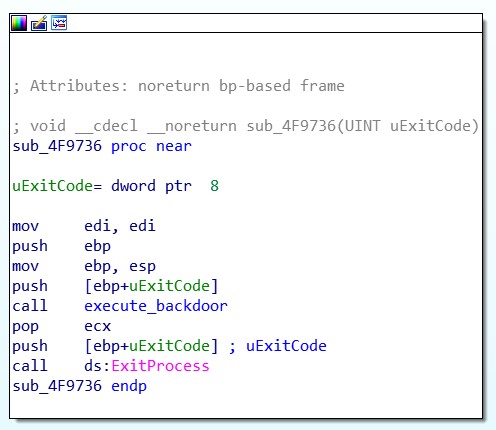
The call to execute_backdoor overwrites a call to a legitimate function just before the execution of ExitProcess.
execute_backdoor is straightforward. First, it allocates a region of memory with read, write and execution permissions. It then retrieves the encrypted shellcode data using hardcoded offsets and decrypts it in the allocated memory. Finally, it calls the entrypoint of the shellcode, once again with a hardcoded offset.
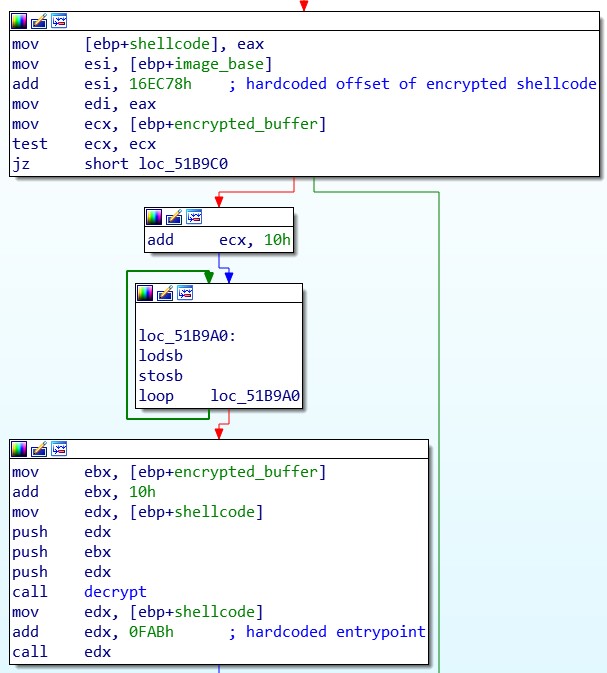
It is worth noting that the two functions used to execute the malicious shellcode, execute_backdoor and decrypt, are both located at the end of the .text section of the executable. This indicates that they were added directly to the legitimate compiled file, rather than during compilation.
The shellcode
The shellcode starts by dynamically loading the DLLs it needs and then retrieves the addresses of the required exported functions. The most interesting ones are iphlpapi.dll, used to retrieve the MAC addresses of the machine, and wininet.dll, for the communication with the C&C.
The next step is to get the MAC addresses of all the interfaces. To obtain this information, the shellcode uses the API function GetAdaptersAddresses. To avoid revealing the targeted addresses, the authors of the backdoor stored their MD5 hashes. In order to correctly check the correspondence, for each interface of the machine, the shellcode computes the MD5 hash of the MAC address.
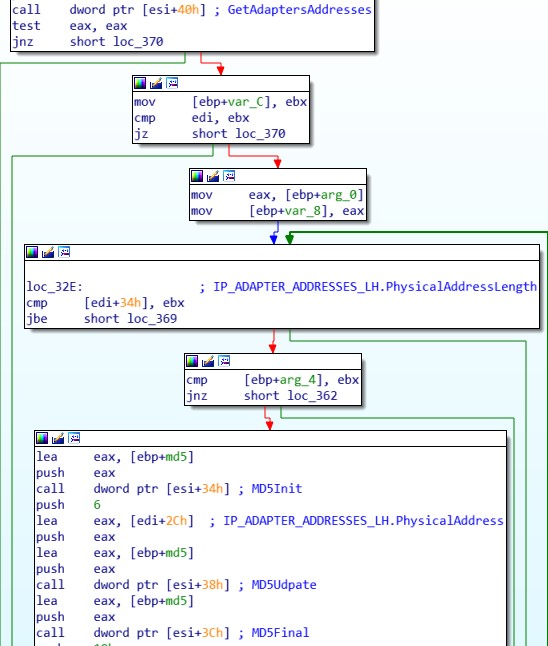
We can now look at how the backdoor checks if the retrieved MAC addresses match any of the targeted ones. The data of each target is stored in the following data structure:
struct mac_data {
DWORD type;
BYTE md5_hash1[0x10];
DWORD sep1;
BYTE md5_hash2[0x10];
DWORD sep2;
}
sep1 and sep2 are always 0. type can be either 1 or 2. If type is 1, in order to match this target the machine just needs to have a MAC address with an MD5 equal to md5_hash1; md5_hash2 is filled with 0. Instead, if type is 2, both md5_hash1 and md5_hash2 have an actual value and they both must be found in the MAC addresses of the machine.
In the example below, we can see type in red, md5_hash1 in blue and md5_hash2 in green.
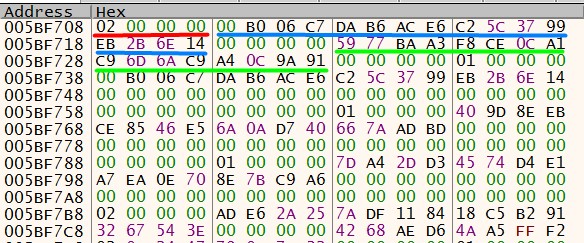
As mentioned by Vitaly Kamluk from Kaspersky Lab, the complete list of targets is scattered among different samples of the backdoor. This specific sample contains 18 of them.
Target identified
If the MAC addresses match one of those in the target list, the shellcode contacts the C&C with the following URL
hxxps://asushotfix[.]com/logo2.jpg?
followed by the hex encode of the matched md5_hash1.
Using the WININET APIs, the shellcode of the second stage is downloaded and saved in another memory region with read, write, execute permission. Finally it is executed.
Not a target
If instead the current machine is not a target, the shellcode performs one final action. It creates a file named idx.ini in the folder of the current user, where it stores a date a week after the current one. The purpose of this file is unclear.
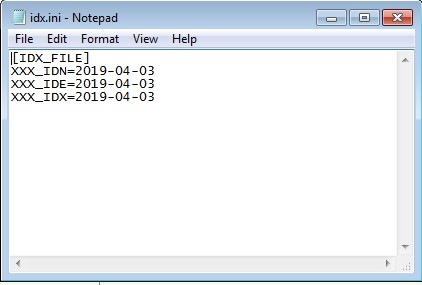
At least for this sample, the backdoor does not perform any malicious activity on machines that are not targeted. There is no form of persistence, so the people behind ShadowHammer cannot reobtain execution unless the setup.exe file is run again by a user.
List of target data
type: 2
00b006c7dab6ace6c25c3799eb2b6e14
5977baa3f8ce0ca1c96d6ac9a40c9a91
type: 1
00b006c7dab6ace6c25c3799eb2b6e14
type: 1
409d8eebce8546e56a0ad740667aadbd
type: 1
7da42dd34574d4e1a7ea0e708e7bc9a6
type: 2
ade62a257adf118418c5b2913267543e
4268aed64aa5fff2020d2447790d7d32
type: 1
7b14c53fd3604cc1ebca5af4415afed5
type: 1
3a8ea62e32b4ecbe33df500a28ebc873
type: 1
cc16956c9506cd2bb389a7d7da2433bd
type: 2
fe4ccc64159253a6019304f17102886d
f241c3073a5777742c341472e2d43eec
type: 1
4ec2564ace982dc58c1039bf6d6ea83c
type: 2
ab0cef9e5957129e23fba178120fa20b
f758024e734077c70532e90251c5df02
type: 1
f35a60617ab336de4daac799676d07b6
type: 1
6a62ead801802a5c9ec828d0c1edbb5b
type: 1
600c7b52e7f80832e3cee84fcec88b9d
type: 2
6e75b2d7470e9864d19e48cb360caf64
fb559bcd103ee0fcb0cf4161b0fafb19
type: 1
690ad61ec7859a0964216b66b5d33b1a
type: 2
09da9df3a050afad0df0ef963b41b6e2
fae3b06ab27f2b0f7c29bf7f2b03f83f
type: 1
d4b958671f47bf5dcd08705d80de9a53